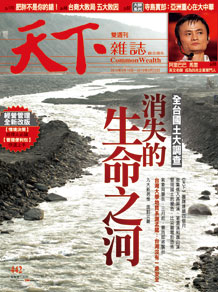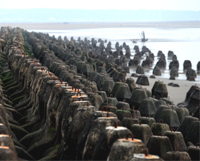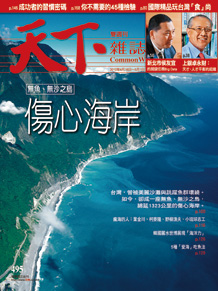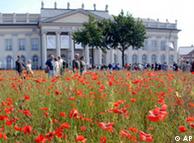Urban research
The laws of the city
A deluge of data makes cities laboratories for those seeking to run them better
Jun 23rd 2012 | from the print edition

Such findings reflect a recent shift in urban research. Better technology has turned cities into fountains of data that confirm known regularities and reveal striking new patterns. This could transform how cities are regarded, built and managed. Attempts to contain urban sprawl, long the prevailing paradigm of urban planning, for instance, could fall out of favour. Cities could be run with the sort of finely tuned mix of technology and performance associated with Formula 1 racing cars.
Back in the 1940s, George Zipf, an American researcher, noted that a city’s population is inversely proportional to its rank in a country. His law holds that the largest city is always about twice as big as the second largest, three times as big as the third largest, and so on. Other regularities have emerged since. Big cities decentralise as they grow, creating more jobs outside the centre. Urban population density in all industrialised countries declines slowly as you move away from the centre. (Moscow, exceptionally, is the other way round.)
The lack of good numbers used to limit such studies. Now data abound. The United Nations and other organisations make most of their statistics freely available. Data have also become more comparable between cities and even between countries. Most important, transport and telecoms networks, and social media, are spawning new data as a free by-product.
This has triggered new research. For instance Geoffrey West and Luis Bettencourt, both of the Santa Fe Institute, found that cities scale much like organisms. Just as an elephant is, roughly speaking, a larger but more energy-efficient version of a gorilla, big cities are thrifty versions of small ones. For a metropolis twice the size of another, the length of electric cables, number of gas stations and other bits of infrastructure decrease by about 15% per inhabitant. But beasts do not enjoy the cities’ rising returns to scale. Income, patents, savings and other signs of wealth rise by around 15% when a city’s size doubles. In short, urbanites consume less but produce more.
Shlomo Angel, an urban planning expert at New York University, gathered historical and census data from hundreds of cities, digitised thousands of maps and had computers count millions of pixels on satellite pictures. Between 1990 and 2000 the surfaces of each of the 120 cities he and his team studied grew on average more than twice as fast as their populations. These rates, he says, are unlikely to change. That means that the amount of urban land will double in only 19 years, whereas the urban population will double in 43 years.
Carlo Ratti, who heads the Senseable City Lab at the Massachusetts Institute of Technology, was one of the first to sift through the data produced by telecoms networks. One aim was to find out how a country’s internal borders reflect human connections. In Britain the English and the Scots hardly talk, at least on landlines; west of London, where many of Britain’s high-tech firms are based, a new region is developing. American states such as Georgia and Alabama belong together, whereas California splits three ways. In Portugal, if a city is twice the size of another, people make 12% more phone calls per head. This gives weight to what urban theorists such as the late Jane Jacobs have long argued: that cities foster the exchange of ideas.
The Centre for Advanced Spatial Analysis (CASA) at University College London, another research hotbed, uses data from London’s Oyster cards—used to pay for public transport—and Twitter messages. Tube-travel patterns are regular: entering the system at one station tends to mean leaving it at a particular other one. Twitter messages reveal a city’s structure and its activity. London has one centre, near Piccadilly Circus; New York has several, including near Times Square, City Hall and in Brooklyn. Tweeting correlates negatively with greenery, particularly in Central Park.
Some in the field are ambivalent about such research. Practitioners of urban planning don’t quite know what to do with the results—particularly regularities of the sort found by Mr West. Others worry that urban research could, just like other fields of study, start to put number-crunching ahead of other important questions. “A green pixel on a satellite image doesn’t tell you whether it’s a park or a private garden,” argues Philipp Rode, of LSE Cities, a research centre at the London School of Economics.
Still, the deluge of urban data is likely to have a big impact. Some academics such as Michael Batty, the director of CASA, see a real prospect of synthesising these patterns and regularities into a “science of the city”, much like physics or biology. That will be the subject of a conference at the Santa Fe Institute in July.
City planners, too, may have to rethink their work. If cities indeed develop organically along certain lines, pushing them onto another track may be futile. Instead of trying to limit growth, planners should “make room”, says Mr Angel: be realistic when projecting urban land needs, set generous metropolitan limits, protect some open space and provide an arterial grid of roads. This is pretty much what New York did in the early 18th century. It is what some Chinese cities are doing now.
Yet the most immediate impact of urban data will be on how cities are managed. In a second research lab in Singapore, Mr Ratti and his colleagues are developing software to turn cities into what he calls “real-time control systems”. These combine all kinds of data feeds, including information about the location of taxis and rainfall. The city state’s transport system would benefit from being better able to match the demand and supply of taxis, particularly when it rains, which tends to happen suddenly in Singapore.
Such examples raise one question: how will data change cities? To get an idea, look at how racing cars have changed. Mechanics used to do all the fine-tuning on their vehicle before a race. Now they sit in front of big screens, monitoring the data that comes in from the hundreds of sensors attached to the car—and make adjustments in real-time. One day city hall may be as packed with screens as a Formula 1 pit.












 圖片來源:劉國泰
十年間,跟大安森林公園一樣大的海岸,消失了。耗費億元也救不回來的海灘,淪陷下沉中的國土,誰扭曲台灣美麗的輪廓?
圖片來源:劉國泰
十年間,跟大安森林公園一樣大的海岸,消失了。耗費億元也救不回來的海灘,淪陷下沉中的國土,誰扭曲台灣美麗的輪廓?






